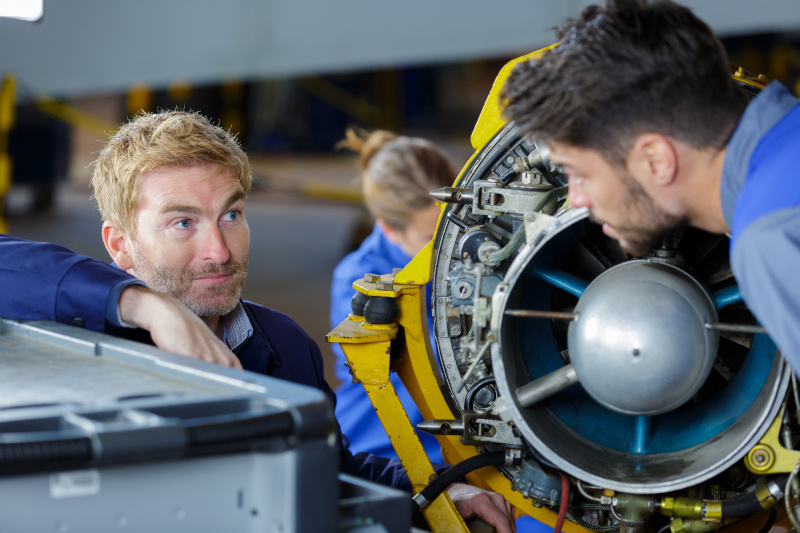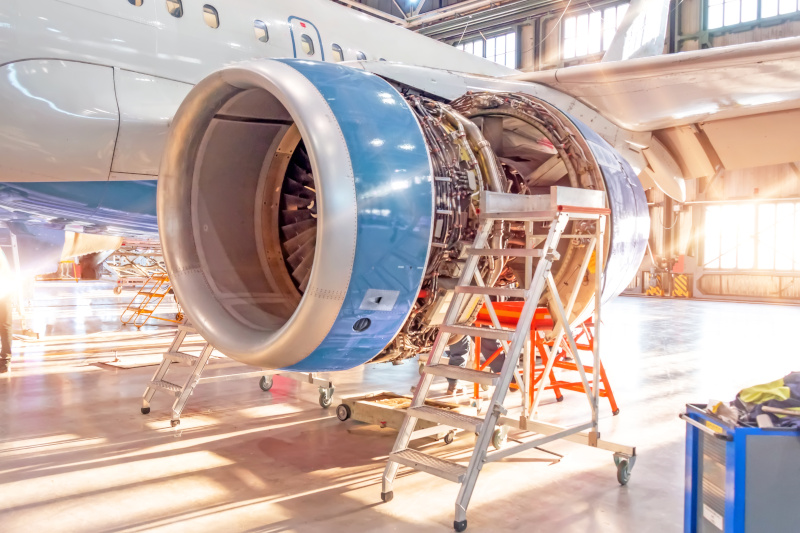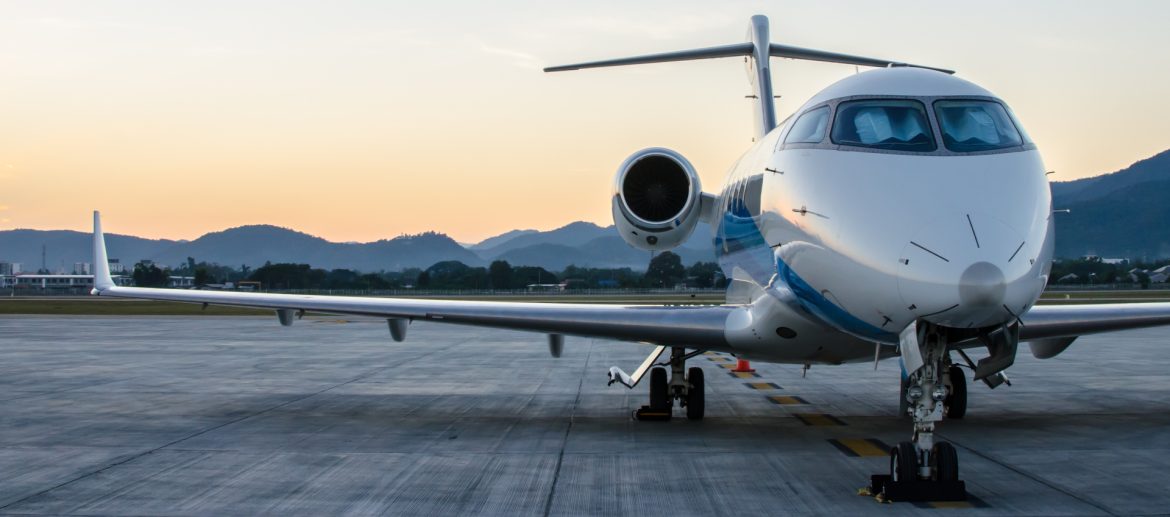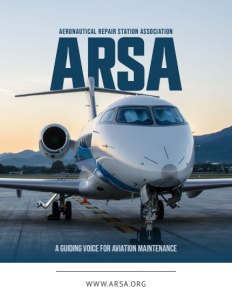Aeronautical Repair Station Association (ARSA)
A Guiding Voice for Aviation Maintenance
Expertly shaping policy, championing safety, and fostering workforce development in the dynamic world of aviation maintenance.
The Aeronautical Repair Station Association (ARSA) assumes a crucial role in the global aviation maintenance landscape, advocating for the interests of those certificated to maintain the intricate and vast array of aircraft flying today. At its heart, ARSA is committed to ensuring its members, from large facilities handling entire aircraft to small shops specializing in individual components, creatively comply with the rigorous regulations set forth by global aviation authorities, instilling a sense of trust and reassurance in the industry.
Christian A. Klein, Executive Vice President of ARSA, underscores the profound impact of the association’s work on the safety of aviation maintenance professionals. “Our members are instrumental in ensuring that aircraft meet stringent safety standards. They handle everything from heavy maintenance of airframes to the meticulous work on individual components that guarantee aircraft operate safely and efficiently, often under the rules of more than one country’s authority,” he elaborates.
Underlining the comprehensive support ARSA provides, Klein highlights the association’s commitment to compliance. “We are deeply involved in regulatory advocacy, working closely with the FAA and other international bodies to shape policy. Our efforts are aimed at simplifying the compliance process for our members, ensuring they can concentrate on what they do best—maintain aircraft safety and functionality,” he affirms.
The collaboration extends beyond borders, engaging with international authorities to foster a cohesive global regulatory environment. “Our dialogue isn’t limited to the FAA; we also engage with the European Union Aviation Safety Agency, Transport Canada Civil Aviation, the UK Civil Aviation Authority, and Brazil’s National Civil Aviation Agency,” Klein adds. “This global engagement helps us push to harmonize standards across borders, benefiting our members wherever they operate to serve safety around the world”
Klein further discusses the association’s proactive stance on workforce development, highlighting its importance in cultivating a sustainable and skilled workforce. “We strongly emphasize promoting the industry as a rewarding career path. Using regulatory and legislative advocacy tools as well as public relations, we focus on creating opportunities and showcasing the long-term benefits of a career in aviation maintenance,” he asserts.

Building a Future-Proof Workforce in Aviation Maintenance
As ARSA continues to play a pivotal role in advocating for the aviation maintenance industry, a critical focus is turning technical recruitment into true career development. The challenge is not just about filling positions but ensuring that new recruits understand the complex regulatory and operational landscape they are entering.
This holistic view of the industry underscores the association’s strategy of nurturing a knowledgeable workforce. “Understanding how each piece fits into the broader aviation ecosystem is vital,” Brett Levanto, Operations, says. “Whether replacing a part or conducting routine checks, it’s about more than the task. It’s about understanding the entire lifecycle of the aircraft, how the rules inform each portion of that lifecycle, and the purpose of the procedures facilities put in place to support the entire system.”
On the regulatory side, Levanto underscores the importance of a deep knowledge base. “You cannot effectively maintain an aircraft without a thorough understanding of its original or altered condition as defined by its design and production specs,” he states. “This knowledge is crucial not just for compliance but for ensuring the safety and reliability of the aviation system.”
Addressing the changes in workforce demographics and the evolving skill sets required in the modern era, Levanto highlights the shifts in recruitment strategies. “The traditional pathways into aviation maintenance careers are transforming. We’re competing not only with traditional hands-on sectors but also with high-tech industries like AWS or Google,” he elaborates.
“This competition necessitates a fresh approach to attracting and developing talent, emphasizing advanced technological skills alongside traditional mechanical knowledge,” he says. “Addressing this requires innovative approaches to recruitment and training, ensuring that aviation maintenance becomes a desirable and accessible career path for the next generation.”
Regulatory Complexity
Regulatory adherence forms the backbone of safe and efficient operations in the aviation maintenance industry. However, the depth and complexity of these regulations can be particularly daunting for smaller entities within the sector. Levanto elaborates on small operations’ unique challenges in the aviation maintenance industry and ARSA’s role in simplifying these complexities.
“Our focus is always on demystifying the regulations and referring back to the plain language of the rules,” he says. “While larger organizations might have the infrastructure to manage compliance, they can sometimes lose sight of the fundamental requirements. That’s where ARSA can provide clarity and guidance.”
ARSA’s approach with smaller entities is tailored to ensure that even the smallest shops can meet regulatory demands efficiently. “For smaller shops, often with just one or two people, it’s not just about technical maintenance; it’s about running a business under stringent regulations,” Levanto continues. “We equip them with tools, model manuals, training, and other resources to help them understand and fulfill their regulatory responsibilities effectively.”
Levanto also addresses a common misconception about regulatory compliance, drawing parallels with everyday experiences to clarify his point. “People often think of government compliance as akin to visiting the DMV — it’s seen as bureaucratic and cumbersome,” he explains. “However, in regulated industries like ours, it’s critical to understand the underlying rules and not just follow procedures blindly.”
He emphasizes the importance of a knowledgeable approach to compliance, especially for smaller businesses that can ill afford the consequences of missteps. “It’s essential for these businesses to be informed and confident in their knowledge of the rules,” Levanto argues. “This empowers them to engage with inspectors and regulatory bodies in a way that aligns with both the letter and spirit of the law, optimizing their operations while remaining compliant.”
ARSA’s Role in Shaping Aviation Legislation
The intersection of aviation maintenance and legislative influence is critical for ARSA, especially in facilitating entry into and growth within the industry. Klein dives into recent legislative triumphs, particularly policies included in Congress bill to reauthorize the FAA.
“Just today, we’ve seen the fruits of our labor with the latest FAA reauthorization bill, which is vital for setting policy priorities and budgets for the next five years,” he shares. “Significantly, this bill includes an expansion of the aviation maintenance workforce development grant program from $5 million to $20 million annually, a testament to our advocacy efforts and recognition of the need for enhanced training and entry paths into the industry.”
The strategic importance of these grants, especially for smaller companies, is a key focus. “We advocated for these grants knowing they would empower not only large companies but also smaller firms that lack the resources to establish programs like apprenticeships on their own,” Klein explains. This approach demonstrates ARSA’s commitment to inclusivity within the industry, ensuring companies of all sizes have the support needed to contribute to aviation safety and efficiency.
Klein also highlights efforts to streamline the path from military service to civilian aviation careers, particularly for technicians. “It’s easier for pilots to transition from military to civilian roles than for technicians. The new legislation directs a rulemaking that we hope will facilitate this transition, making it smoother for skilled veterans to continue their careers in civil aviation,” he states.
Expanding on the regulatory and legislative impact theme, Levanto reflects on ARSA’s work with the Youth Access to American Jobs in Aviation Task Force. “Our involvement with the task force aimed to increase awareness and interest in aviation careers starting from a young age,” he explains. The industry must plant the seeds of career interest well before the traditional recruitment age by capturing the imagination of younger demographics.
Bridging Tradition and Innovation in Aviation Maintenance
In the rapidly evolving field of aviation maintenance, adopting new technologies represents both a challenge and an opportunity. The industry’s traditional approach to integrating emerging technologies—cautiously and sometimes hesitantly—highlights a broader struggle between maintaining proven safety standards and embracing innovation that could redefine operational norms.
Levanto discusses the juxtaposition of technological advancement and industry readiness. “In aviation, technologies considered ’emerging’ are often already established in other sectors. Our industry’s cautious approach is partly about prioritizing safety, but it also reflects a resistance to change rooted in human nature,” he points out. While beneficial for safety, this cautiousness can stifle the quicker adoption of innovations that are commonplace elsewhere.
“For instance, developing a supersonic airliner involves not just technological hurdles but also regulatory ones, like gaining exemptions to fly over land,” Levanto explains. “This slow integration process can deter those excited about rapid technological advancements from entering the aviation field.”
Levanto also reflects on internal perceptions of technology within ARSA. “We’ve had to evolve our views significantly,” he admits. “A few years back, there was skepticism within our ranks about the role of new data tools in maintenance, viewing it more as a threat than a tool. Now, we recognize that predictive technologies can enhance the capabilities of technicians, not replace them.”
Despite technological advances, he emphasizes the critical role of human technicians in the future of aviation maintenance. “Even in a future with advanced AI and predictive maintenance tools, the industry will always require the expertise of human technicians. These technologies are here to support, not supplant, the skilled workforce.”

ARSA’s Strategic Vision for the Future
As the global landscape for aviation maintenance evolves, ARSA remains steadfast in its commitment to shaping an industry as resilient as it is dynamic. The association’s annual conference in Washington, DC, serves as a crucial nexus for members from across the spectrum, providing them unparalleled opportunities for advocacy, learning, and networking.
Klein outlines the multifaceted structure of the ARSA annual conference, emphasizing its comprehensive agenda. “The conference starts with a day dedicated to engaging with senior executives from key U.S. Executive Branch departments such as State, Commerce, and Transportation,” he describes. The following days are packed with activities ranging from legislative advocacy on Capitol Hill to deep dives into regulatory matters with panels that include representatives from significant authorities like the FAA and EASA.
Looking ahead, Klein and Levanto discuss the association’s future focus areas, particularly the pressing issue of workforce development amidst a looming shortage of skilled professionals. “We are projecting a need for tens of thousands of new workers in the near future in the United States with more needed around the world” Klein states, highlighting the urgency of their initiatives.
International collaboration and supply chain resilience also top ARSA’s agenda. Klein points to the need for greater efficiency and coordination among global regulators to keep pace with industry growth and maintain safety without redundant oversight. “We are actively participating in a supply chain resiliency task force to ensure our members have the necessary resources to support safe and uninterrupted operations,” he explains.
Despite the evolving challenges, Levanto reflects on the underlying continuity in ARSA’s mission. “The more things change, the more they stay the same. Our core challenge remains balancing regulatory compliance with business needs, always returning to the plain language of the rules,” he muses. “Good safety is good business,” Levanto concludes, underscoring the belief that supporting a culture of safety benefits the entire industry.
AT A GLANCE
Aeronautical Repair Station Association (ARSA)
What: Trade association for the global aviation maintenance industry
Where: Washington, D.C.
Website: https://arsa.org/


